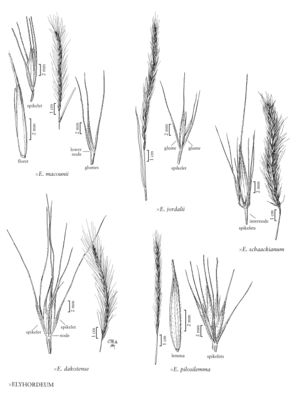Difference between revisions of "×elyhordeum pilosilemma"
FNA>Volume Importer |
GeoffLevin (talk | contribs) |
||
| (4 intermediate revisions by 2 users not shown) | |||
| Line 1: | Line 1: | ||
{{Treatment/ID | {{Treatment/ID | ||
|accepted_name=×elyhordeum pilosilemma | |accepted_name=×elyhordeum pilosilemma | ||
| − | |accepted_authority=(W.W. Mitch. & H.J. | + | |accepted_authority=(W.W. Mitch. & H.J. Hodgs.) Barkworth |
|publications= | |publications= | ||
|basionyms= | |basionyms= | ||
| Line 29: | Line 29: | ||
-->{{#Taxon: | -->{{#Taxon: | ||
name=×elyhordeum pilosilemma | name=×elyhordeum pilosilemma | ||
| − | |authority=(W.W. Mitch. & H.J. | + | |authority=(W.W. Mitch. & H.J. Hodgs.) Barkworth |
|rank=species | |rank=species | ||
|parent rank=genus | |parent rank=genus | ||
| Line 42: | Line 42: | ||
|publication year= | |publication year= | ||
|special status= | |special status= | ||
| − | |source xml=https:// | + | |source xml=https://bitbucket.org/aafc-mbb/fna-data-curation/src/200273ad09963decb8fc72550212de541d86569d/coarse_grained_fna_xml/V24/V24_407.xml |
|subfamily=Poaceae subfam. Pooideae | |subfamily=Poaceae subfam. Pooideae | ||
|tribe=Poaceae tribe Triticeae | |tribe=Poaceae tribe Triticeae | ||
Latest revision as of 22:52, 3 December 2021
Culms 40-75 cm, erect, glabrous. Sheaths glabrous or pubescent; blades 6-15 cm long, 2-4 mm wide, flat, adaxial surfaces glabrous or hairy. Spikes 6-12 cm long, 5-7 mm wide including the awns, erect to arching, with 1-2 spikelets per node; internodes 2-5 mm, concealed by the spikelets. Spikelets 7-13 mm, with 2-3 florets and 2-3 glumes. Glumes 10-18 mm including the awns, not indurate at the base, linear to linear-lanceolate, hispid, 1-3-veined; lemmas 7-10 mm, evenly pilose, hairs about 0.2 mm, awns as long as to slightly longer than the lemma bodies; anthers 1-1.5 mm, indehiscent. In = 28.
Discussion
×Elyhordeum pilosilemma is a hybrid between Elymus macrourus and Hordeum jubatum that occurs in many locations where the two parental species co-occur. It is very similar to ×E. jordalii, a hybrid between E. macrourus and H. brachyantherum.
Selected References
None.
